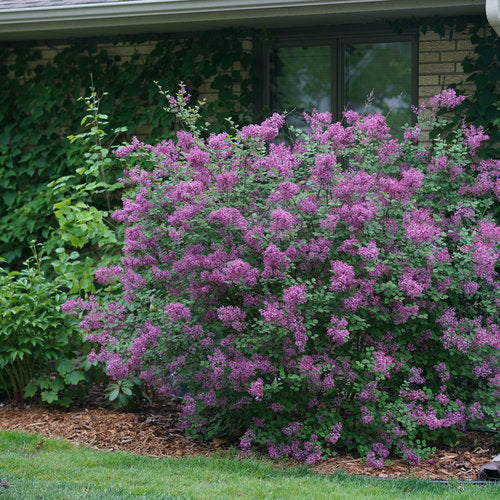The Story of Lilac Shrub
A Legacy of Beauty and Resilience
For centuries this beloved Lilac Shrub has held the attention of diverse cultures across the globe through its distinctive aroma and exquisite blossoms. This plant originated in Eastern Europe and Asia, and historical documents show its existence in Ottoman Empire gardens. Trade routes and botanical curiosity drove the plant westward until 16th-century European horticulturists began its cultivation. English and French gardens embraced this plant as an essential addition before it established itself in North American colonial landscapes. Its reputation expanded with each generation while it secured its position in historic estates alongside public parks and cottage gardens.
Lilac Shrub A Natural Healer Through the Ages
The ornamental plant demonstrates resilience while gaining recognition for its healing properties. Traditional herbal practices involved brewing the plant's fragrant blossoms and leaves to create teas or tinctures that helped promote relaxation and provided relief for mild respiratory issues. The bark served as an astringent remedy in several cultures where people applied it to small wounds and skin problems. Early herbalists tested the extracts as treatments for both fever and digestive issues. Contemporary medicine no longer uses this herb for such purposes, yet historical documentation has established its significance in traditional healing practices and natural treatment methods.
First Discovery and Early Documentation

The discovery timeline of the plant remains obscure but written records from the Renaissance period reveal that botanical scholars carefully described its features. Turkish and Persian botanists likely pioneered its intentional cultivation because they found the plant's enchanting fragrance and fragile petals irresistible. In the 1500s European explorers brought the species to their native lands where it successfully grew in carefully tended gardens. The plant spread rapidly because of its adaptable nature which resulted in its cultural significance across the globe. Through hybridization practices botanists achieved a diverse spectrum of colors and various bloom sizes which solidified its reputation as a cherished botanical wonder.
Lilac Shrub A Versatile Addition to Landscapes
This flowering plant has attracted gardeners and landscapers for centuries because of its vibrant beauty and delightful fragrance. This plant adapts well to multiple applications including formal hedges and foundation plantings as well as casual garden beds. Homeowners frequently plant it next to windows or patios where its strong scent can move indoors during flowering time. In public parks and botanical gardens, this plant functions as a dramatic centerpiece that gives seasonal color and architectural form. People either shape this plant into a tree-like structure or let it grow naturally bushy, which demonstrates its adaptability to multiple landscape designs. The plant's ability to endure drought conditions and survive cold winters makes it increasingly sought after which guarantees its ongoing existence in both historic and modern garden landscapes.
A Vision of Grace and Color
The breathtaking plant displays a wide range of blossoms from pale lavender to deep purple and includes cultivars that show white, pink or bluish tones. The small tubular flowers form dense clusters that appear during springtime and stand out vividly against the lush green heart-shaped leaves. The plant's full bloom turns gardens into romantic spaces filled with nostalgic memories of traditional gardens and summer childhood experiences. The tree maintains its visual appeal throughout the year thanks to its textured bark and elegant branches that stand out even when dormant. The specimen stands alone or grouped for a powerful visual display and consistently embodies unmatched grace and charm.
Lilac Shrub A Haven for Rare Wildlife
This plant serves an important role in maintaining local ecosystems despite its stunning appearance. Pollinators like butterflies, bees and hummingbirds depend on this plant's nectar-filled flowers as their food source. The swallowtail among other rare butterfly species visits its flowers because they provide a rich source of nutrition. The shrub provides small songbirds with shelter when they use its thick branches to build their nests. This plant provides essential shelter and food for wildlife which highlights why it's important to grow native species that thrive well in home gardens as urban development reduces natural habitats.
The Lilac Shrub stands as an everlasting botanical gem that occupies a place among the world's most cherished flowering plants. It maintains its presence across global gardens as a centuries-old legacy. The plant’s historical significance together with its medical applications and roles in landscape design and ecological conservation guarantees its appreciation by many future generations.